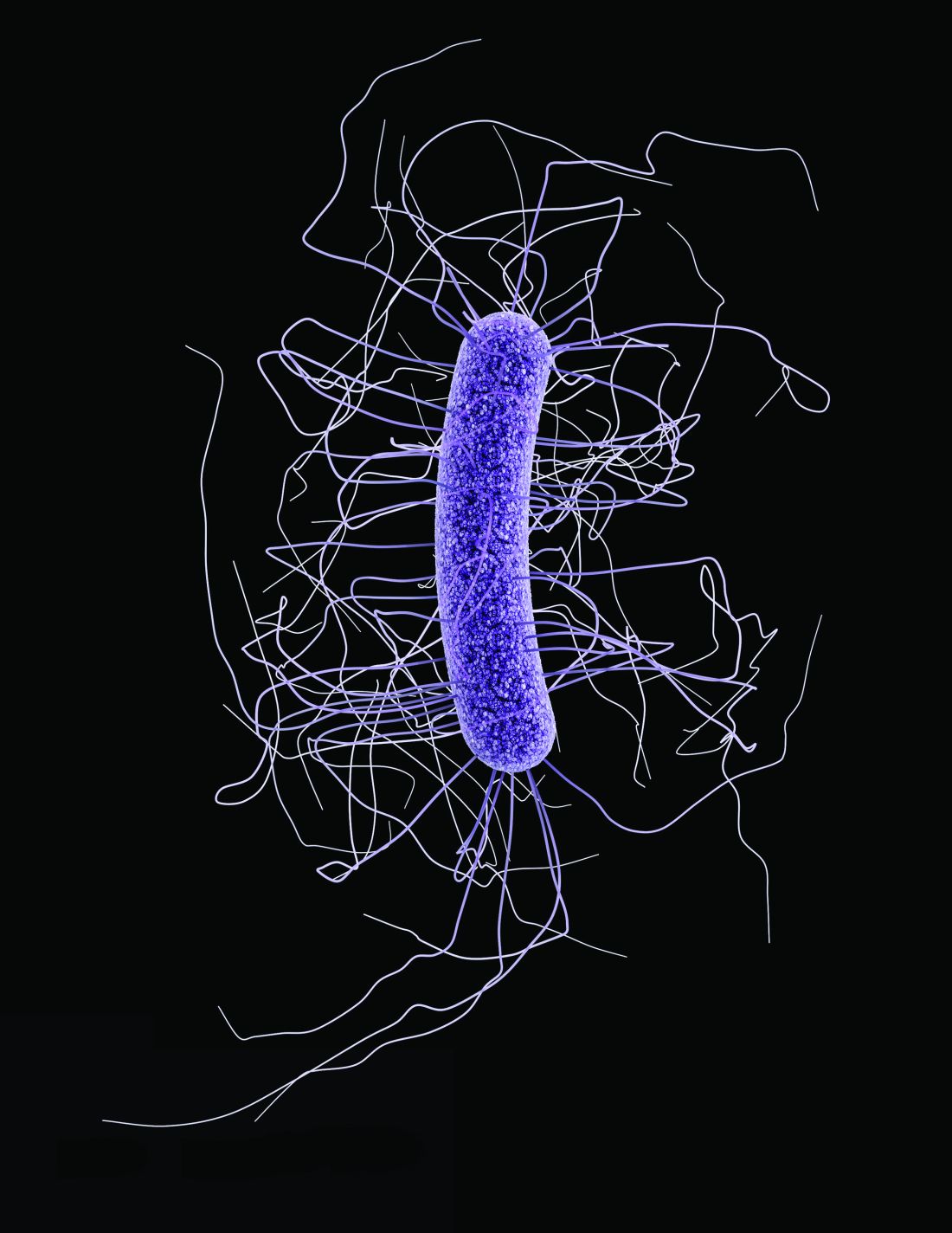User login
The use of proton pump inhibitors increased the odds of a patient having hospital-onset Clostridium difficile infection (HO CDI) as did the use of third- and fourth-generation cephalosporins, carbapenems, and piperacillin/tazobactam, according to the results of a retrospective database study of more than 1 million patients at 150 U.S. hospitals.
PPIs increased the odds of HO CDI by 44% (P less than .001), whereas the use of H2 antagonists increased the odds ratio for HO CDI to a lesser, but still significant, extent (13% increase, P less than .001), according to the report published online in Clinical Infectious Diseases.
Overall, the odds of HO CDI were significantly higher in patients taking carbapenems, third- and fourth-generation cephalosporins, metronidazole, and piperacillin/tazobactam, as well as patients on multiple antibiotics. However, treatment with tetracyclines, macrolides, or clindamycin significantly reduced the odds of HO CDI.
The combination of PPIs with fluoroquinolones, third-generation cephalosporins, fourth-generation cephalosporins, clindamycin, or carbapenems did not significantly alter the odds of HO CDI, which was in contrast with a previous meta-analysis (Am J Gastroenterol. 2012;107[7]:1011-9).
In addition to the drug associations, the odds of a patient having HO CDI increased by 0.5% for each year in age. The odds of CDI in women was 1.2 times as likely as in men, and admission from a long-term care facility, the presence of the comorbidities of diabetes, Crohn’s disease or ulcerative colitis, as well as days in the ICU and antibiotic days of therapy all significantly increased the odds of a patient having HO CDI. (Clin Infect Dis. 2017 Dec. 20. doi: 10.1093/cid/cix1112).
“The results support the need for stewardship practices around both high-risk antibiotics and medications that alter gastric acid regulation. Furthermore, the impact of deprescribing acid suppression therapy coupled with antibiotic stewardship could greatly reduce the incidence of HO CDI,” the researchers concluded.
The authors reported that they had no conflicts or funding source for this work.
SOURCE: Watson, T. et al. Clin Infect Dis. 2017 Dec. 20. doi: 10.1093/cid/cix1112.
The use of proton pump inhibitors increased the odds of a patient having hospital-onset Clostridium difficile infection (HO CDI) as did the use of third- and fourth-generation cephalosporins, carbapenems, and piperacillin/tazobactam, according to the results of a retrospective database study of more than 1 million patients at 150 U.S. hospitals.
PPIs increased the odds of HO CDI by 44% (P less than .001), whereas the use of H2 antagonists increased the odds ratio for HO CDI to a lesser, but still significant, extent (13% increase, P less than .001), according to the report published online in Clinical Infectious Diseases.
Overall, the odds of HO CDI were significantly higher in patients taking carbapenems, third- and fourth-generation cephalosporins, metronidazole, and piperacillin/tazobactam, as well as patients on multiple antibiotics. However, treatment with tetracyclines, macrolides, or clindamycin significantly reduced the odds of HO CDI.
The combination of PPIs with fluoroquinolones, third-generation cephalosporins, fourth-generation cephalosporins, clindamycin, or carbapenems did not significantly alter the odds of HO CDI, which was in contrast with a previous meta-analysis (Am J Gastroenterol. 2012;107[7]:1011-9).
In addition to the drug associations, the odds of a patient having HO CDI increased by 0.5% for each year in age. The odds of CDI in women was 1.2 times as likely as in men, and admission from a long-term care facility, the presence of the comorbidities of diabetes, Crohn’s disease or ulcerative colitis, as well as days in the ICU and antibiotic days of therapy all significantly increased the odds of a patient having HO CDI. (Clin Infect Dis. 2017 Dec. 20. doi: 10.1093/cid/cix1112).
“The results support the need for stewardship practices around both high-risk antibiotics and medications that alter gastric acid regulation. Furthermore, the impact of deprescribing acid suppression therapy coupled with antibiotic stewardship could greatly reduce the incidence of HO CDI,” the researchers concluded.
The authors reported that they had no conflicts or funding source for this work.
SOURCE: Watson, T. et al. Clin Infect Dis. 2017 Dec. 20. doi: 10.1093/cid/cix1112.
The use of proton pump inhibitors increased the odds of a patient having hospital-onset Clostridium difficile infection (HO CDI) as did the use of third- and fourth-generation cephalosporins, carbapenems, and piperacillin/tazobactam, according to the results of a retrospective database study of more than 1 million patients at 150 U.S. hospitals.
PPIs increased the odds of HO CDI by 44% (P less than .001), whereas the use of H2 antagonists increased the odds ratio for HO CDI to a lesser, but still significant, extent (13% increase, P less than .001), according to the report published online in Clinical Infectious Diseases.
Overall, the odds of HO CDI were significantly higher in patients taking carbapenems, third- and fourth-generation cephalosporins, metronidazole, and piperacillin/tazobactam, as well as patients on multiple antibiotics. However, treatment with tetracyclines, macrolides, or clindamycin significantly reduced the odds of HO CDI.
The combination of PPIs with fluoroquinolones, third-generation cephalosporins, fourth-generation cephalosporins, clindamycin, or carbapenems did not significantly alter the odds of HO CDI, which was in contrast with a previous meta-analysis (Am J Gastroenterol. 2012;107[7]:1011-9).
In addition to the drug associations, the odds of a patient having HO CDI increased by 0.5% for each year in age. The odds of CDI in women was 1.2 times as likely as in men, and admission from a long-term care facility, the presence of the comorbidities of diabetes, Crohn’s disease or ulcerative colitis, as well as days in the ICU and antibiotic days of therapy all significantly increased the odds of a patient having HO CDI. (Clin Infect Dis. 2017 Dec. 20. doi: 10.1093/cid/cix1112).
“The results support the need for stewardship practices around both high-risk antibiotics and medications that alter gastric acid regulation. Furthermore, the impact of deprescribing acid suppression therapy coupled with antibiotic stewardship could greatly reduce the incidence of HO CDI,” the researchers concluded.
The authors reported that they had no conflicts or funding source for this work.
SOURCE: Watson, T. et al. Clin Infect Dis. 2017 Dec. 20. doi: 10.1093/cid/cix1112.
FROM CLINICAL INFECTIOUS DISEASES
Key clinical point: Proper stewardship of PPIs, antibiotics might lower risk of hospital-onset C. difficile infection.
Major finding: Patients taking PPIs had a 44% increased risk of developing hospital-onset C. difficile infection.
Study details: Retrospective database study of more than 1 million patients at 150 U.S. hospitals.
Disclosures: The authors reported that they had no conflicts or funding source for this work.
Source: Watson, T. et al. Clin Infect Dis. 2017 Dec. 20. doi: 10.1093/cid/cix1112.

